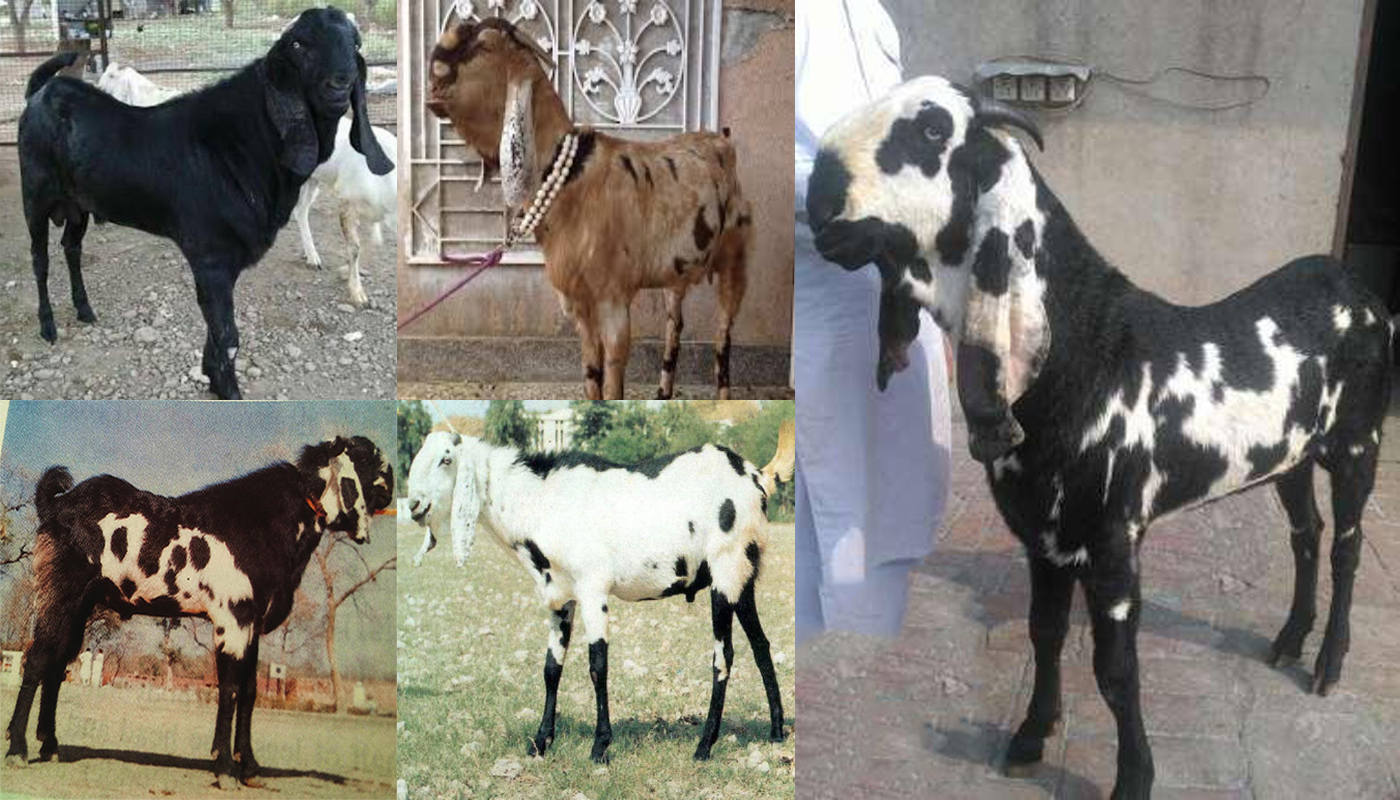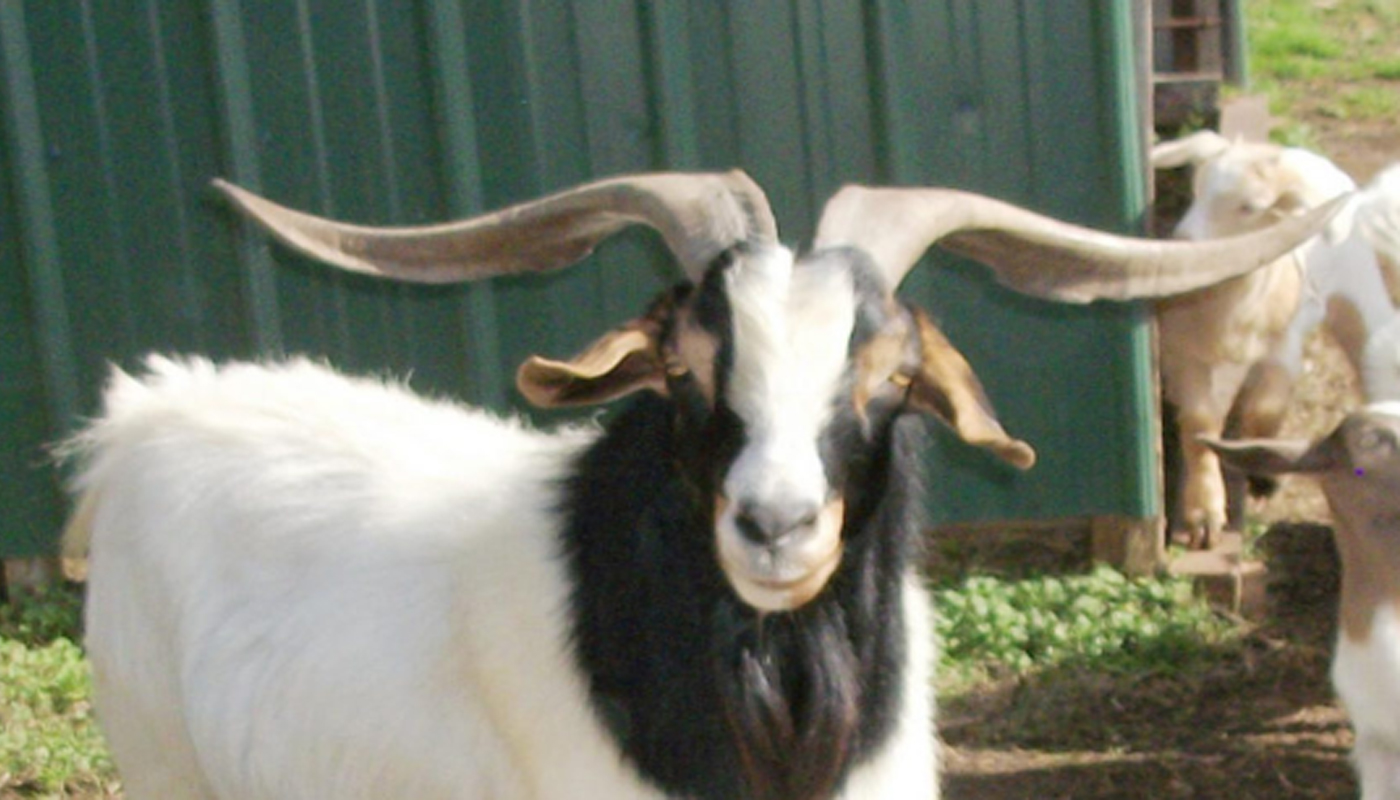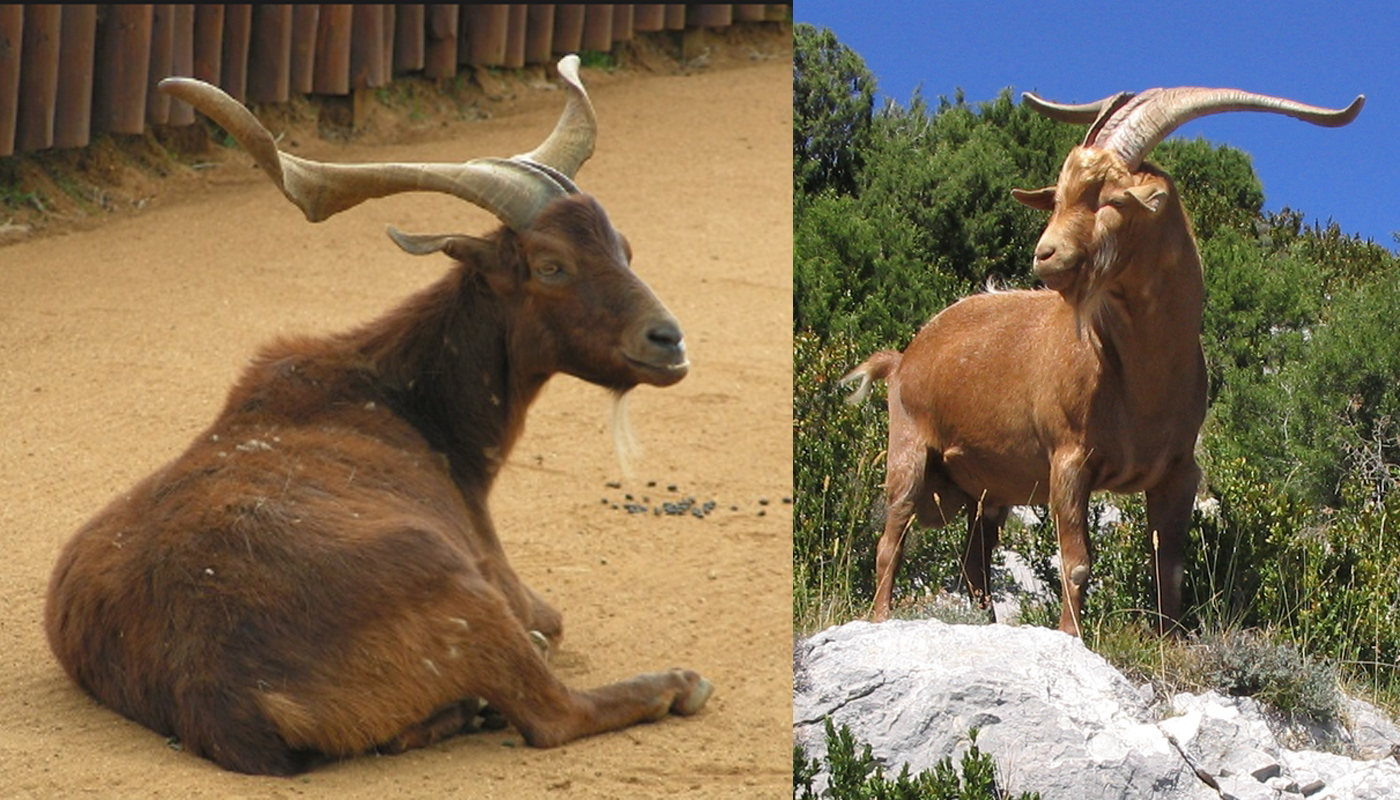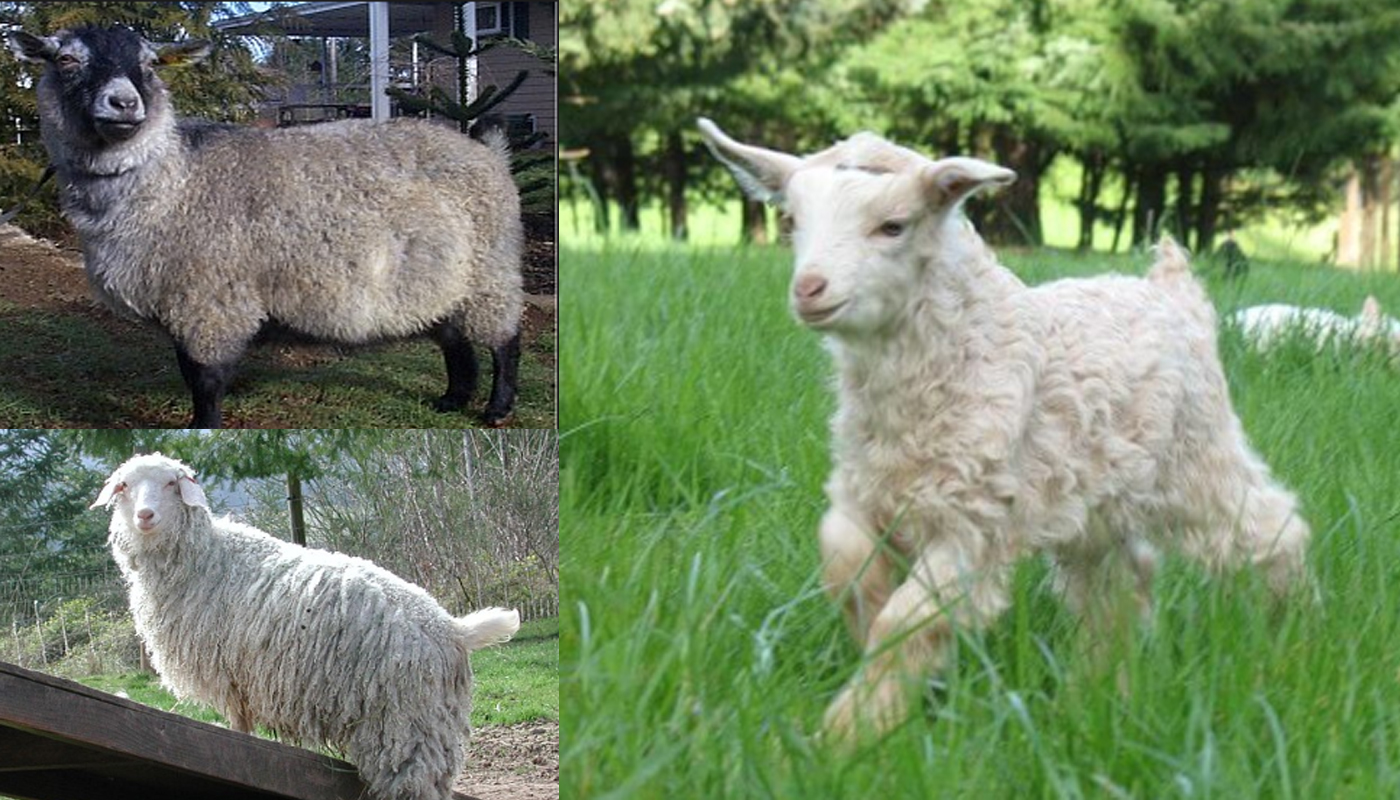Goats are remarkable creatures known for their hardiness and adaptability, but like all animals, they are susceptible to various health issues. Whether you’re a seasoned goat owner or considering bringing these delightful animals into your life, it’s crucial to understand the common health problems that can affect different goat breeds. In this comprehensive guide, we’ll explore some of the prevalent health issues encountered in goats and discuss preventive measures and treatments to keep your herd healthy and thriving.
Parasitic Infections:
Parasitic infections pose significant health threats to goats and can cause a range of issues if not managed effectively. Here’s a closer look at the types of parasitic infections commonly encountered in goats:
- Internal Parasites:
- Stomach Worms (Haemonchus contortus): Also known as the barber pole worm, this blood-sucking parasite can cause severe anemia, weight loss, diarrhea, and even death, particularly in young or immunocompromised goats.
- Intestinal Worms: Various species of intestinal worms such as roundworms (nematodes) and tapeworms (cestodes) can inhabit the gastrointestinal tract of goats, leading to digestive disturbances, poor growth, and reduced feed efficiency.
- Coccidia: Protozoan parasites of the genus Eimeria can infect the intestinal lining of goats, resulting in coccidiosis characterized by diarrhea (often bloody), dehydration, weight loss, and decreased milk production.
- External Parasites:
- Lice: Infestations of lice can cause intense itching, hair loss, and skin irritation in goats, leading to discomfort and reduced productivity.
- Mites: Sarcoptic and psoroptic mites can cause mange in goats, resulting in skin lesions, hair loss, and secondary bacterial infections if left untreated.
- Ticks: Ticks can transmit various diseases to goats, including tick-borne fever (anaplasmosis), Lyme disease, and piroplasmosis, leading to fever, anemia, and in severe cases, death.
Preventive Measures and Treatments:
- Regular Fecal Testing: Conducting fecal egg counts helps identify the presence and severity of internal parasite infections, guiding deworming protocols.
- Strategic Deworming: Rotate dewormers and administer them strategically based on fecal test results, target grazing season, and environmental conditions to minimize the risk of parasite resistance.
- Pasture Management: Practice rotational grazing, which helps reduce parasite load on pasture by allowing time for larvae to die off before goats return to graze.
- Quarantine and Biosecurity: Quarantine new arrivals and practice biosecurity measures to prevent introducing parasites to your herd.
- External Parasite Control: Use topical treatments, dusts, or dips to control lice and mites, and inspect goats regularly for ticks, removing them promptly.
- Maintaining Good Nutrition: Proper nutrition helps goats develop immunity and resilience against parasitic infections. Ensure goats have access to high-quality forage, balanced mineral supplements, and clean water.
By implementing these preventive measures and treatments, goat owners can effectively manage parasitic infections, promote the health and productivity of their herds, and minimize the risk of economic losses associated with parasitic diseases. Regular monitoring, proactive management, and collaboration with a veterinarian are essential components of a comprehensive parasite control program for goats.
Nutritional Deficiencies:
Nutritional deficiencies can significantly impact the health and productivity of goats. Proper nutrition is essential for supporting growth, reproduction, immune function, and overall well-being. Here are some key nutritional deficiencies commonly observed in goats:
- Protein Deficiency:
- Insufficient dietary protein can lead to poor growth, reduced milk production in lactating does, and compromised immune function, making goats more susceptible to infections.
- Symptoms may include slow growth rates, rough hair coat, muscle wasting, and decreased milk production.
- Mineral Deficiencies:
- Copper Deficiency: Copper is essential for various physiological processes, including enzyme function, iron metabolism, and connective tissue formation. Copper deficiency can lead to anemia, poor growth, reproductive disorders, and neurological problems like swayback in kids.
- Selenium Deficiency: Selenium is a crucial antioxidant that supports immune function and thyroid health. Selenium deficiency can result in white muscle disease, weak kids at birth, retained placenta in does, and decreased fertility.
- Zinc Deficiency: Zinc is important for skin health, wound healing, and immune function. Deficiency can cause dermatitis, hoof abnormalities, decreased appetite, and impaired growth.
- Calcium and Phosphorus Imbalance: Improper calcium-to-phosphorus ratio in the diet can lead to metabolic disorders like hypocalcemia (milk fever) in does around kidding, as well as weak bones and poor growth in growing kids.
- Vitamin Deficiencies:
- Vitamin A Deficiency: Vitamin A is essential for vision, immune function, and reproduction. Deficiency can cause night blindness, rough hair coat, reduced fertility, and susceptibility to infections.
- Vitamin E Deficiency: Vitamin E is an important antioxidant that protects cell membranes and supports immune function. Deficiency may result in muscular dystrophy (white muscle disease), poor growth, and reproductive disorders.
Preventive Measures and Treatments:
- Balanced Diet: Provide goats with a balanced diet containing adequate levels of protein, energy, minerals (including copper, selenium, zinc, calcium, and phosphorus), and vitamins to meet their nutritional requirements.
- Forage Analysis: Conduct regular forage analysis to assess nutrient content and adjust feed rations accordingly.
- Supplementation: Supplement goats’ diet with mineral blocks, loose minerals, or concentrated mineral supplements formulated specifically for goats to address deficiencies in the local environment.
- Proper Grazing Management: Practice rotational grazing to ensure goats have access to diverse forage and prevent overgrazing, which can deplete pasture nutrients.
- Consultation with a Nutritionist or Veterinarian: Seek professional advice from a livestock nutritionist or veterinarian to develop customized feeding programs tailored to the specific needs of your goats and the local conditions.
By addressing and preventing nutritional deficiencies through appropriate management practices and dietary supplementation, goat owners can optimize the health, productivity, and longevity of their herds. Regular monitoring of body condition, growth rates, and reproductive performance can help identify and rectify nutritional issues before they escalate into serious health problems.
Respiratory Diseases:
Respiratory diseases are a common concern among goat owners and can significantly impact the health and productivity of their herds. Here are some of the respiratory diseases frequently encountered in goats:
- Pneumonia:
- Pneumonia is a serious respiratory condition characterized by inflammation of the lungs, often caused by bacterial, viral, or fungal infections.
- Common bacterial agents involved in pneumonia include Pasteurella spp. and Mannheimia haemolytica, while viral pathogens include Caprine Herpesvirus and Parainfluenza virus.
- Symptoms of pneumonia in goats may include coughing, nasal discharge (which can be clear, mucoid, or purulent), fever, rapid or labored breathing, lethargy, and loss of appetite.
- Pneumonia can be particularly severe in young kids and immunocompromised animals, leading to pneumonia-related mortality if not promptly diagnosed and treated.
- Contagious Caprine Pleuropneumonia (CCPP):
- CCPP is a highly contagious bacterial respiratory disease caused by Mycoplasma capricolum subsp. capripneumoniae.
- This disease primarily affects goats, particularly those in close contact with infected animals, and is characterized by severe inflammation of the lungs and pleura (lining of the chest cavity).
- Symptoms of CCPP include severe respiratory distress, coughing, nasal discharge, fever, and reluctance to move or eat.
- CCPP can spread rapidly within a herd, leading to significant morbidity and mortality if not controlled through isolation, treatment with appropriate antibiotics, and strict biosecurity measures.
Preventive Measures and Treatments:
- Vaccination: Vaccination against key respiratory pathogens, such as Pasteurella spp. and Mannheimia haemolytica, can help reduce the incidence and severity of pneumonia in goats. However, no commercially available vaccine exists for CCPP.
- Quarantine and Biosecurity: Implement strict biosecurity protocols to prevent the introduction and spread of respiratory diseases within your herd. Quarantine new arrivals and avoid mixing goats from different sources until they have been thoroughly evaluated for signs of respiratory illness.
- Proper Housing and Ventilation: Provide well-ventilated housing facilities that minimize exposure to drafts, moisture, and airborne pathogens. Proper ventilation helps reduce the risk of respiratory infections and ensures good air quality for goats.
- Nutritional Support: Maintain goats’ overall health and immunity through a balanced diet rich in vitamins and minerals, as nutritional deficiencies can compromise their ability to fight off respiratory infections.
- Prompt Veterinary Care: Seek veterinary assistance at the first sign of respiratory illness in goats. Early diagnosis and treatment are crucial for managing respiratory diseases effectively and preventing complications.
By implementing these preventive measures and promptly addressing respiratory illnesses through veterinary intervention, goat owners can minimize the impact of respiratory diseases on their herds and promote the health and well-being of their animals. Regular monitoring for signs of respiratory distress and proactive management practices are essential components of a comprehensive respiratory disease control program in goats.
Reproductive Disorders:
Reproductive disorders can have significant implications for goat herds, affecting fertility, breeding success, and overall productivity. Here are some common reproductive disorders encountered in goats:
- Pregnancy Toxemia (Ketosis):
- Pregnancy toxemia, also known as ketosis or twin-lamb disease, typically occurs in late pregnancy, especially in does carrying multiple fetuses or those with inadequate nutrition.
- This metabolic disorder results from a negative energy balance, leading to the accumulation of ketone bodies in the blood and tissues.
- Symptoms include lethargy, weakness, loss of appetite, staggering gait, and eventual collapse.
- Prompt intervention with energy-rich treatments, such as oral propylene glycol or intravenous dextrose, along with supportive care, is crucial to save the doe and her unborn kids.
- Abortion:
- Abortions in goats can result from various factors, including infectious agents, nutritional imbalances, hormonal disturbances, stress, and genetic abnormalities.
- Common infectious causes of abortion include Chlamydia abortus, Coxiella burnetii (Q fever), Toxoplasma gondii, and various viral pathogens.
- Symptoms of abortion may include vaginal discharge, uterine contractions, and the expulsion of fetal tissues.
- Diagnosis of the underlying cause often requires laboratory testing of fetal tissues, placenta, or maternal blood samples.
- Preventive measures include vaccination against specific abortifacient agents, maintaining good nutritional management, minimizing stress during pregnancy, and practicing strict biosecurity measures.
- Reproductive Tract Infections:
- Reproductive tract infections, such as metritis (uterine infection), endometritis, and vaginitis, can occur postpartum or during the breeding season.
- These infections may result from bacterial contamination during parturition, poor hygiene practices, or immunosuppression.
- Symptoms include foul-smelling vaginal discharge, fever, reduced fertility, and reproductive failure.
- Treatment involves systemic antibiotics, uterine lavage, and supportive therapy to resolve infection and restore reproductive health.
- Uterine Prolapse:
- Uterine prolapse is a rare but serious condition characterized by the protrusion of the uterus through the vaginal opening, often occurring during or after kidding.
- Contributing factors include weak uterine ligaments, prolonged or difficult labor, and nutritional deficiencies.
- Immediate veterinary attention is necessary to replace the prolapsed uterus, administer appropriate medications, and monitor for complications such as infection and uterine necrosis.
Preventive Measures and Treatments:
- Maintain proper body condition score and nutrition throughout the reproductive cycle, ensuring adequate energy, protein, vitamins, and minerals.
- Implement strict biosecurity protocols to prevent the introduction and spread of infectious agents that can cause reproductive disorders.
- Monitor pregnant does closely for signs of pregnancy toxemia, provide supplemental feeding if necessary, and intervene promptly if symptoms develop.
- Vaccinate against specific abortifacient pathogens based on regional prevalence and risk factors.
- Practice good hygiene during kidding, including clean bedding, sanitized equipment, and proper umbilical cord care.
- Seek veterinary assistance for diagnosis, treatment, and preventive management of reproductive disorders, including routine reproductive health examinations and screening tests.
By addressing reproductive disorders through proactive management practices and veterinary intervention, goat owners can optimize breeding outcomes, enhance herd fertility, and maintain the long-term reproductive health of their animals. Regular monitoring, timely intervention, and adherence to preventive measures are essential components of successful reproductive management in goat herds.
Hoof Problems:
Hoof problems are common issues that can affect the health and mobility of goats. Proper hoof care is essential for maintaining overall well-being and preventing lameness. Here are some common hoof problems encountered in goats:
- Hoof Rot (Foot Rot):
- Hoof rot is a bacterial infection primarily caused by Fusobacterium necrophorum, which thrives in moist, anaerobic environments.
- Wet, muddy conditions, poor hoof conformation, and overcrowded living spaces can contribute to the development of hoof rot.
- Symptoms include foul-smelling discharge, inflammation, swelling, and lameness.
- Treatment involves trimming affected hooves to remove diseased tissue, cleaning the area with antiseptic solutions, and applying topical antibiotics or foot baths to control infection.
- Foot Abscesses:
- Foot abscesses occur when bacteria invade the soft tissues of the hoof, leading to the formation of pus-filled pockets.
- Causes of foot abscesses include puncture wounds, foreign objects lodged in the hoof, and bacterial infections.
- Affected goats may exhibit lameness, reluctance to bear weight on the affected limb, and swelling of the affected hoof.
- Treatment involves locating and draining the abscess, cleaning the affected area, and administering systemic antibiotics if necessary.
- Overgrown Hooves:
- Overgrown hooves can result from inadequate hoof trimming or lack of abrasive surfaces for natural wear.
- Excessive hoof growth can lead to distortion of the hoof shape, discomfort, and difficulty walking.
- Regular hoof trimming is essential to maintain proper hoof conformation and prevent overgrowth.
- Hoof Cracks and Lesions:
- Hoof cracks and lesions can occur due to trauma, excessive moisture, or nutritional deficiencies.
- Cracks in the hoof wall can provide entry points for bacteria, leading to infections and further hoof deterioration.
- Treatment involves trimming the affected area to remove loose or damaged tissue, and applying hoof dressings or wraps to promote healing and prevent infection.
Preventive Measures and Treatments:
- Practice regular hoof trimming every 6-8 weeks to maintain proper hoof conformation and prevent overgrowth.
- Provide goats with dry, well-drained living areas to minimize exposure to moisture and reduce the risk of hoof rot.
- Avoid overcrowding in pens and pastures to minimize stress and reduce the spread of hoof infections.
- Monitor goats regularly for signs of hoof problems, such as lameness or swelling, and intervene promptly if issues arise.
- Implement biosecurity measures to prevent the introduction and spread of hoof diseases within the herd.
- Consult with a veterinarian or experienced hoof trimmer for guidance on proper hoof care techniques and treatment options for specific hoof conditions.
By addressing hoof problems through proactive management practices and timely intervention, goat owners can promote hoof health, reduce the risk of lameness, and ensure the overall well-being of their animals. Regular hoof maintenance and attention to environmental factors are essential for preventing and managing hoof issues in goat herds.
Conclusion:
Understanding the common health issues in goat breeds is essential for maintaining the well-being of your herd. By implementing preventive measures, practicing good management techniques, and seeking timely veterinary intervention when needed, you can help ensure that your goats lead healthy, happy lives. Remember, proactive care and vigilance are key to preventing and managing health problems in goats, ultimately contributing to the success and sustainability of your goat-raising endeavors.
 Beetal Goat Breed – Everything You Need to Know
Beetal Goat Breed – Everything You Need to Know Jonica Goat Breed – Everything You Need to Know
Jonica Goat Breed – Everything You Need to Know Sable Saanen Goat Breed – Everything You Need to Know
Sable Saanen Goat Breed – Everything You Need to Know Altai Mountain Goat Breed – Everything You Need to Know
Altai Mountain Goat Breed – Everything You Need to Know Spanish Goat Breed – Everything You Need to Know
Spanish Goat Breed – Everything You Need to Know Choosing the Perfect Goat Breed for Your Homestead: A Comprehensive Guide
Choosing the Perfect Goat Breed for Your Homestead: A Comprehensive Guide 10 Best Goat Breeds for Meat Production
10 Best Goat Breeds for Meat Production Kaghani Goat Breed – Everything You Need to Know
Kaghani Goat Breed – Everything You Need to Know Rove Goat Breed – Everything You Need to Know
Rove Goat Breed – Everything You Need to Know British Alpine Goat Breed – Everything You Need to Know
British Alpine Goat Breed – Everything You Need to Know Pygora Goat Breed – Everything You Need to Know
Pygora Goat Breed – Everything You Need to Know Girgentana Goat Breed – Everything You Need to Know
Girgentana Goat Breed – Everything You Need to Know